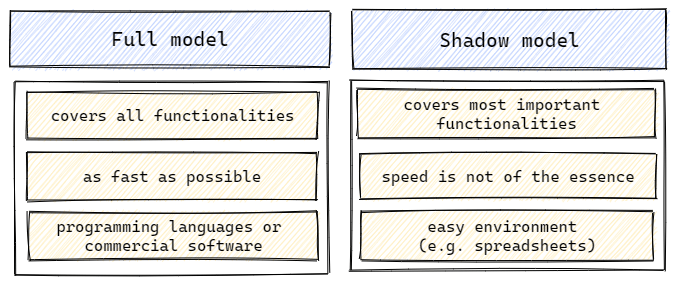Do you work in an insurance company? You may come across the term shadow model in the context of actuarial reporting.
What's hidden in this mysterious term?
Actuarial cash flow models are usually complex. Actuaries develop them in commercial software or with programming languages.
It's not easy to review these models, especially for actuaries who are less technical. The validators also struggle to audit them due to their complexity.
That's why it's common to create a shadow cash flow model in an easier environment such as in a spreadsheet. The shadow model replicates the full model results. The shadow model should be as close as possible to the full model's results but remain as simple as possible. Sometimes it's also okay if the shadow model has a minor difference (say up to 1%) if it helps to keep it simple.

The main aims of the shadow model:
- control of the full model's correctness,
- review of the model by other actuaries or validators,
- testing of new functionalities implemented in the model.
The shadow model might only reflect the main functionalities of the full model. That's the case when the full model is complex with plenty of edge cases. For example, the calculation is different for a few policies. If the group of policies is small, then you can omit the functionality.
Also, the shadow model doesn't have to be fast. The aim of the shadow model is to present functionalities, usually on one policy or on a sample of policies. It's not used for regular reportng so the speed is not very important.

